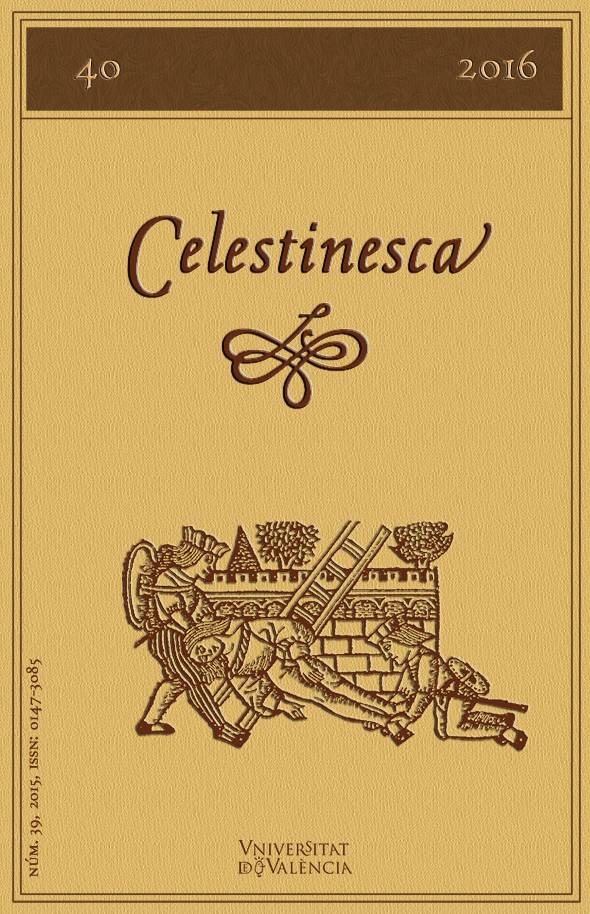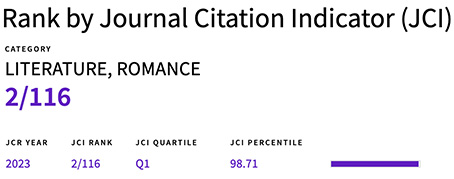Likely reasons for Celestina being considered an anonymous work in the 16th and 17th centuries, and Rojas' work since the 19th century
DOI:
https://doi.org/10.7203/Celestinesca.40.20195Keywords:
Celestina, «Auctor», Author, Bestower, Editor, Reworking, Composition Abstract
Abstract
The interpretation of the paratexts of the Celestina in the light of the definitions of the Diccionario de Autoridades allows to differentiate between an anonymous «auctor» for the Carta and the «autor» identified in the acrostics, as well as to establish an equivalence between the old term «auctor» and the modern term «bestower», and «autor» with the modern «composer», «adapter», «editor». And because the editorial practices of 500 years ago allowed the reproduction of anonymous texts without any acknowledgement of authorship, it was only natural that originally Fernando de Rojas was not considered as the author (that is the creator) of the Celestina, and that this work was considered anonymous. Only the changes in words meaning and other circumstances related to the reception of the Celestina during the 19th century gave rise to an opinion favorable to attribute to Rojas the authorship.
 Downloads
Downloads
Downloads
Published
How to Cite
-
Abstract555
-
PDF (Español)254
Issue
Section
License
![]() Celestinesca is committed to the dissemination of knowledge, that is why access to its contents is free and is ruled by a Creative Commons Attribution-NonCommercial-NoDerivatives 4.0 license.
Celestinesca is committed to the dissemination of knowledge, that is why access to its contents is free and is ruled by a Creative Commons Attribution-NonCommercial-NoDerivatives 4.0 license.
Authors retain the rights to their works. Therefore, they can disseminate them and deposit them in the repository, institutional or not, that they wish. However, they are kindly requested to do so by providing the full bibliographic reference and the corresponding DOI.
Celestinesca does not charge authors for submitting, processing, reviewing or publishing their articles.





